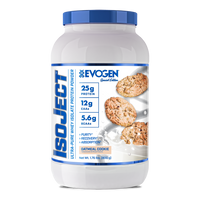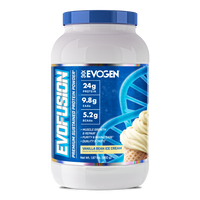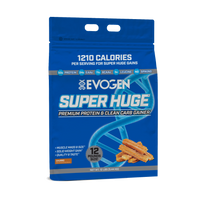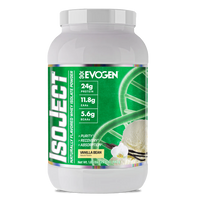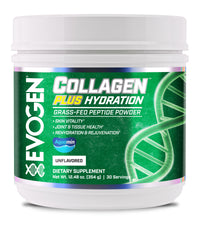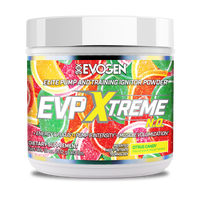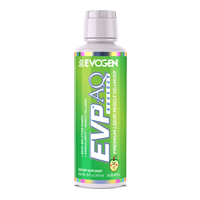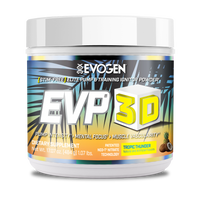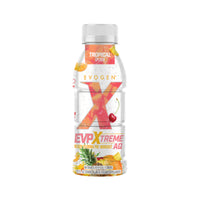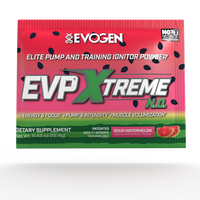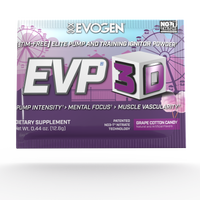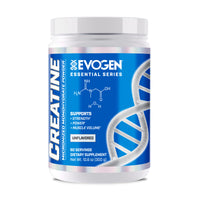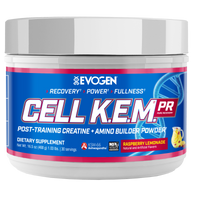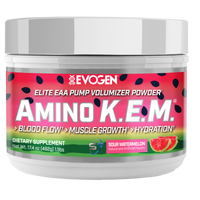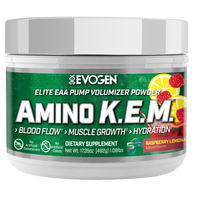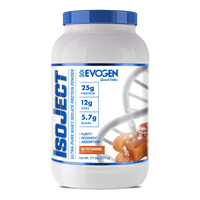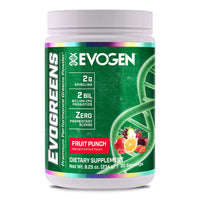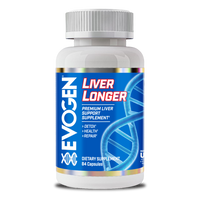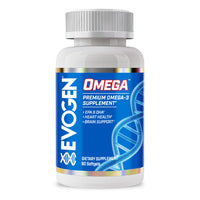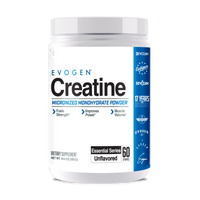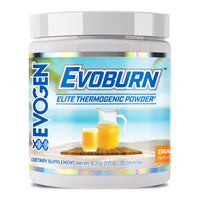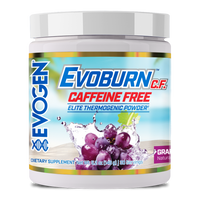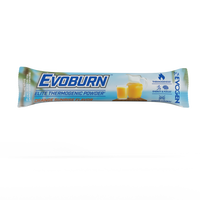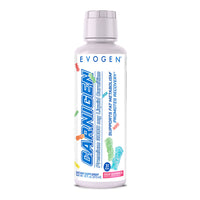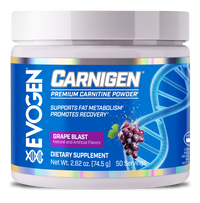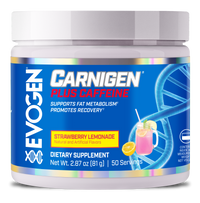Muscle strains can derail your training and throw off your rhythm, but the right recovery plan helps you come back faster. Whether you’ve pulled a hamstring from sprinting or have tight shoulders from lifting, learning how to speed up muscle strain recovery means understanding what’s happening inside your body and giving it the right conditions to heal.
Recovery isn’t just about resting on the sidelines. It’s an active process that combines immediate care, smart nutrition, and habits that support long-term strength. By managing inflammation, fueling repair with protein and amino acids, and staying consistent with mobility work, you can reduce soreness, prevent re-injury, and get back under the bar with confidence.
Understanding Muscle Strain and Recovery
A muscle strain happens when fibers stretch too far or tear. This type of muscle injury is common whether you’re lifting weights, sprinting, or just moving awkwardly. Your body responds quickly: blood flow increases, swelling sets in, and tissue repair begins almost immediately. That’s why the injured area often feels tender, warm, and swollen.
At Evogen, we’ve seen athletes from weekend warriors to IFBB pros struggle with the same setbacks, pulling a hamstring mid-sprint or tweaking a shoulder under the bar. Hany Rambod, our founder, always says recovery is as much a discipline as training. By guiding the healing process with smart habits and the right nutrition, you don’t just heal, you come back stronger.
What Happens During a Muscle Injury
When you strain a muscle, tiny blood vessels can rupture, leading to bruising, swelling, and pain. This inflammatory phase is your body’s way of protecting the area and kick-starting repair. Over the next days and weeks, your body moves into the repair phase, using protein and amino acids to rebuild muscle fibers. Finally, the remodeling phase strengthens those fibers so your muscle regains full function. Skipping rehab here raises your risk of re-injury, so guiding the process matters as much as time.
We’ve all felt that sudden “pull” that makes you stop mid-set. We remind our athletes that inflammation isn’t the enemy; it’s your body’s way of starting repair. The smarter we are in supporting that process with nutrition and supplementation, the faster we can transition from pain to progress.
Common Risk Factors for Muscle Strains
Not every muscle injury is a random accident; many strains occur due to preventable risk factors. Athletes who skip proper warm-ups, push through fatigue, or use poor form when lifting weights are at higher risk of pulling a muscle. Training in cold environments without loosening up also increases the chance of tight muscle fibers tearing.
Previous injuries can also raise your risk. A strained muscle that never fully recovered may have lingering weakness or scar tissue, which makes it more vulnerable during intense activity. That’s why strengthening the injured area during rehab is so important for long-term resilience.
Focusing on balanced training across all muscle groups helps, too. Overdeveloping one area while neglecting its opposite (like strong quads but weak hamstrings) creates imbalances that often lead to muscle injury. Recognizing these risk factors lets you build smarter programs that not only aid recovery but also protect against future injury.
At Evogen, we coach athletes to think long-term. It’s not just about preventing the next strain, it’s about building balanced, resilient muscle. Hany has trained champions by hammering this point: weaknesses and imbalances are opportunities. When you correct them, you don’t just avoid injury; you unlock new levels of performance.
How a Strained Muscle Is Diagnosed
Most strains are diagnosed through a physical exam. A doctor will check tenderness, swelling, and movement to determine severity. For more severe injuries, like a complete tear, you may need an MRI or X-ray to rule out other damage. Accurate diagnosis is key, so you don’t risk re-injury by pushing too soon.
First Steps After a Pulled Muscle
Immediate care sets the tone for recovery. The gold standard is the RICE method:
- Rest – Avoid using the injured muscle group.
- Ice – Apply an ice pack for 15–20 minutes every few hours to reduce swelling.
- Compression – Use a wrap or sleeve to stabilize the injured area.
- Elevation – Keep the affected area above heart level to reduce fluid buildup.
Pairing RICE with smart nutrition is essential. For example, our IsoJect Whey Protein Isolate delivers fast-absorbing protein to fuel early tissue repair in strained muscle fibers.
How to Reduce Swelling and Pain
In the first few days, ice and compression minimize swelling and discomfort. Once the initial pain eases, alternating heat and ice boosts circulation and keeps muscles from stiffening up. Elevation helps, too, but the real key is consistency; steady care speeds recovery more than any single trick.
Muscle Strain Recovery Supplements and Nutrition
Recovery demands the right fuel. Protein, amino acids, and anti-inflammatory nutrients accelerate muscle healing and reduce downtime.
- IsoJect Whey Protein Isolate – Provides complete protein for repairing damaged tissue.
- Amino K.E.M. EAA – Supports recovery and reduces soreness across muscle groups.
- AminoJect BCAA – Helps reduce muscle breakdown and speed tissue repair.
- Cell K.E.M. PR- Maximizes blood flow, recovery, and muscle fullness post-training.
Nutrition Beyond Protein
Protein may be the foundation, but recovery also depends on other nutrients. Omega-3 fatty acids and turmeric curcumin reduce inflammation, while vitamin C and D support collagen formation and muscle function. Minerals like magnesium and zinc are vital for energy production and repair. Pairing whole foods like salmon, citrus fruits, nuts, and leafy greens with Evogen supplements ensures your body has every tool it needs to heal efficiently.
Recovery Timelines and What to Expect
Every athlete wants to know: how long until I can train again? The reality is that recovery time varies depending on the severity of the strain. Mild strains with only minor damage may heal in a few days to two weeks with proper rest and care. Moderate strains usually require three to six weeks before you’re back to full training, while severe injuries may take several months and often need structured physical therapy.
Your body’s overall health, age, and nutrition also play big roles in recovery time. Athletes who prioritize sleep, hydration, and targeted supplementation often notice faster improvements than those who neglect these basics. Strategic nutrition, like high-quality protein and EAAs, gives your body the raw materials to rebuild muscle and bounce back sooner.
Being realistic with your recovery prevents frustration and helps you avoid re-injury. Healing isn’t linear; you may feel better one day and sore again the next. Listening to your body, working with your physical therapist, and adjusting your program accordingly will help you progress steadily without setbacks.
Physical Therapy and Home Care Tips
Gentle movement keeps muscles from stiffening and helps prevent scar tissue from forming incorrectly. Physical therapy offers structured, specific exercises that support recovery while avoiding future injury. At home, you can aid recovery with:
- Gentle stretching (once pain allows)
- Self-massage and mobility work
- Proper positioning during daily activities
Physical Therapy in Action
Physical therapy isn’t just stretching; it’s a progression of mobility, strength, and prevention. Early range-of-motion drills prevent stiffness. Later, therapists add light resistance to strengthen the injured muscle safely. They also analyze your form to prevent future strains, turning rehab into a chance to come back stronger than before.
Exercise Progression After a Strain
Jumping back into heavy lifting too soon is one of the biggest mistakes athletes make after a muscle injury. Instead, a gradual progression ensures your injured muscle adapts safely to increased stress.
Start with pain-free mobility exercises to restore range of motion. Once movement feels smooth, add light resistance bands or bodyweight drills that target the affected muscle group. From there, slowly increase the load by about 10% per week, watching carefully for signs of pain or swelling.
Your goal during this stage is not to chase personal records but to rebuild a strong, functional muscle that can handle future demands. Combining this progression with muscle strain recovery supplements like our Amino K.E.M. helps fuel tissue repair while you steadily ramp up intensity.
Lifestyle Habits to Aid a Faster Recovery
Healing doesn’t stop in the gym. Sleep, hydration, and stress management are non-negotiable for faster recovery. During deep sleep, your body releases growth hormone that fuels tissue repair. Staying hydrated keeps muscle fibers pliable and reduces the risk of re-injury.
Recovery Habits Athletes Overlook
High stress raises cortisol, slowing healing. That’s why many of our athletes lean on tools like meditation and supplementation. Evogen’s KSM-66 Ashwagandha is clinically studied to help manage cortisol levels, putting your body in a recovery-first state. Pairing stress management with active recovery can dramatically shorten downtime.
Hydration and Electrolyte Balance in Recovery
Most athletes know water is important, but hydration is about more than just drinking fluids. Electrolytes, sodium, potassium, magnesium, and calcium, regulate muscle contraction and relaxation. Without proper balance, muscles fatigue faster, cramp more easily, and struggle to recover after strain.
During the healing process, hydration supports circulation, which delivers nutrients and oxygen to the injured area while flushing out waste products. That’s why dehydration often leads to slower recovery times and more painful muscle stiffness.
Evogen Pro Tip: Adding products like our EVP AQ Liquid Glycerol improves cellular hydration, helping your muscles stay supple and responsive during both recovery and training. Pair this with a steady intake of water-rich foods like fruits and vegetables to ensure you’re covering hydration from multiple angles.
Preventing Future Muscle Injuries
Most strains are preventable with the right habits. Warm up with dynamic stretching, train with proper form, and avoid sudden jumps in weight or volume. Balanced strength training across all muscle groups reduces imbalances that can lead to injury.
Consistently using muscle strain recovery supplements like our Amino K.E.M. helps you bounce back from tough sessions and lowers the risk of setbacks.
When to Seek Medical Help for Severe Injuries
If you feel a sharp “pop,” experience immediate severe pain, or can’t contract the muscle, you may be dealing with a more severe injury, such as a grade 3 strain or completely ruptured muscle. In these cases, a doctor may recommend surgery and longer-term physical therapy. Don’t ignore these warning signs; getting help fast can prevent long-term issues.
Severe Injuries and Medical Care
Even then, recovery isn’t just about treatment; it’s about giving your body what it needs to rebuild. Protein, BCAAs, and hydration support help you come back stronger instead of losing ground during downtime.
Recover Stronger, Come Back Better
Speeding up recovery from a pulled muscle takes more than rest; it takes a plan. From first-aid steps to physical therapy, from sleep to hydration, every choice matters. Learning how to speed up muscle strain recovery means giving your body the right tools: targeted nutrition, consistent rehab, and smart supplementation. Learning how to speed up muscle strain recovery means fueling your body with the right tools: rehab, rest, and premium nutrition.
Evogen’s IsoJect, Amino K.E.M., and AminoJect deliver the building blocks your muscles need to repair faster, reduce soreness, and prevent setbacks. Think of recovery as training; the better you recover, the harder you can push next time.
Explore Evogen’s full line of recovery supplements here.
